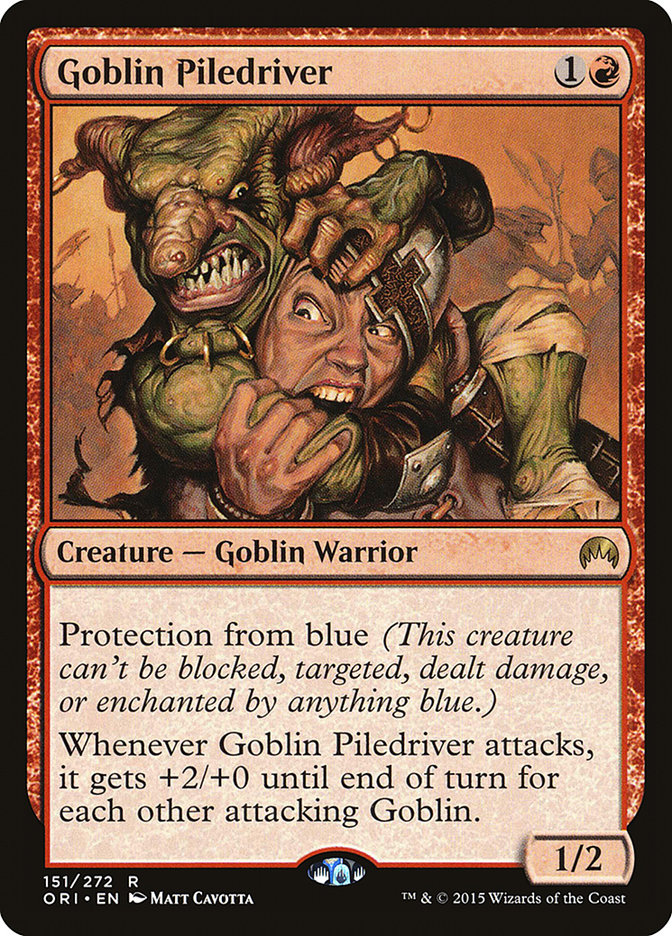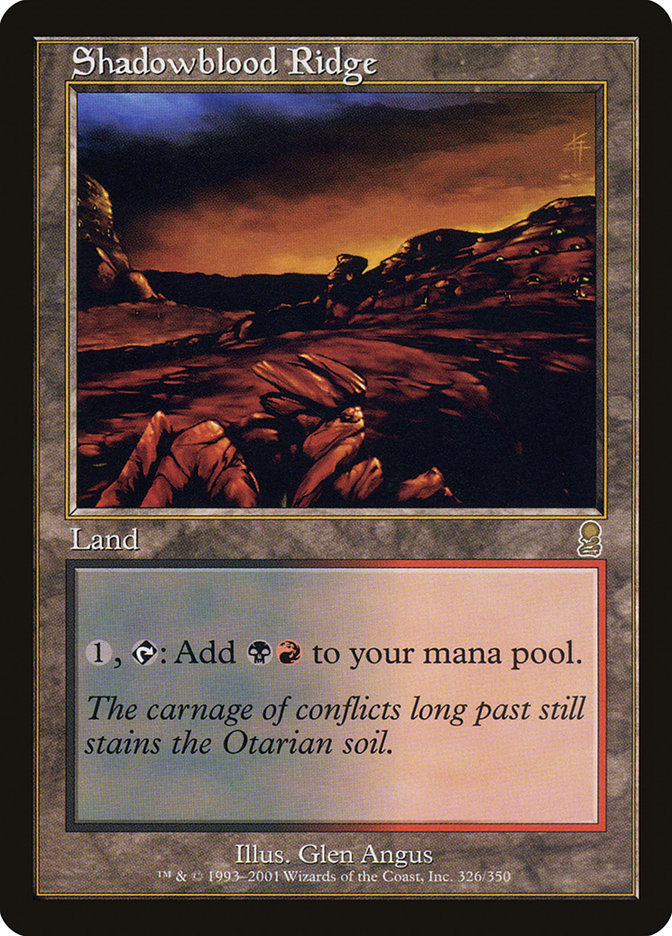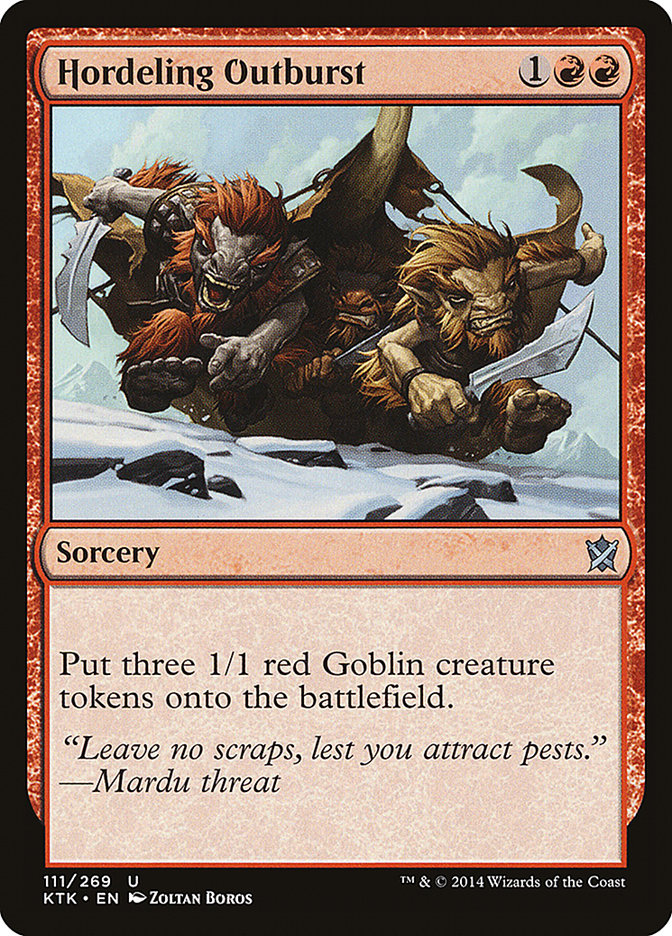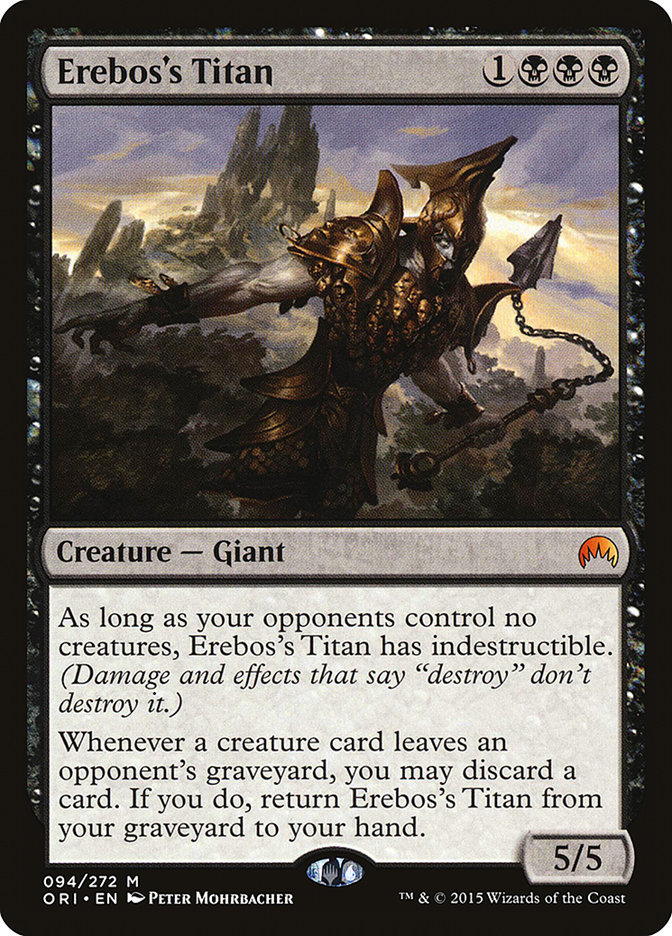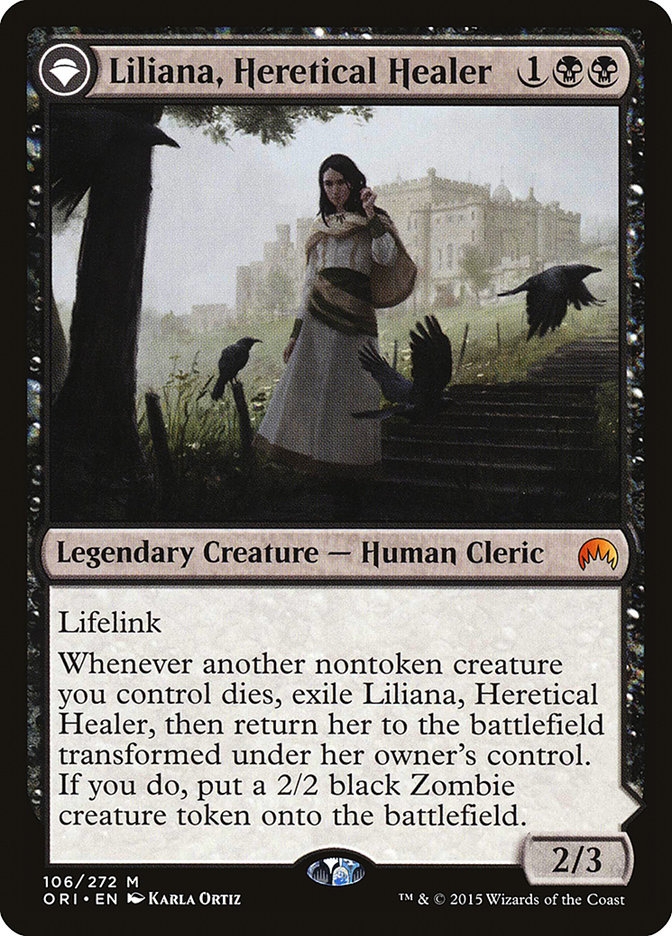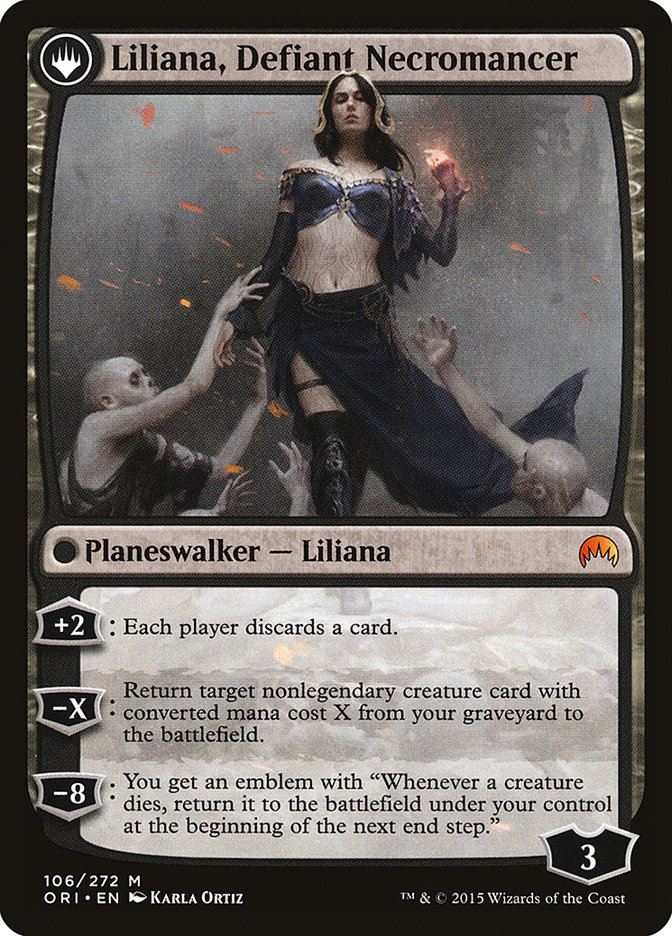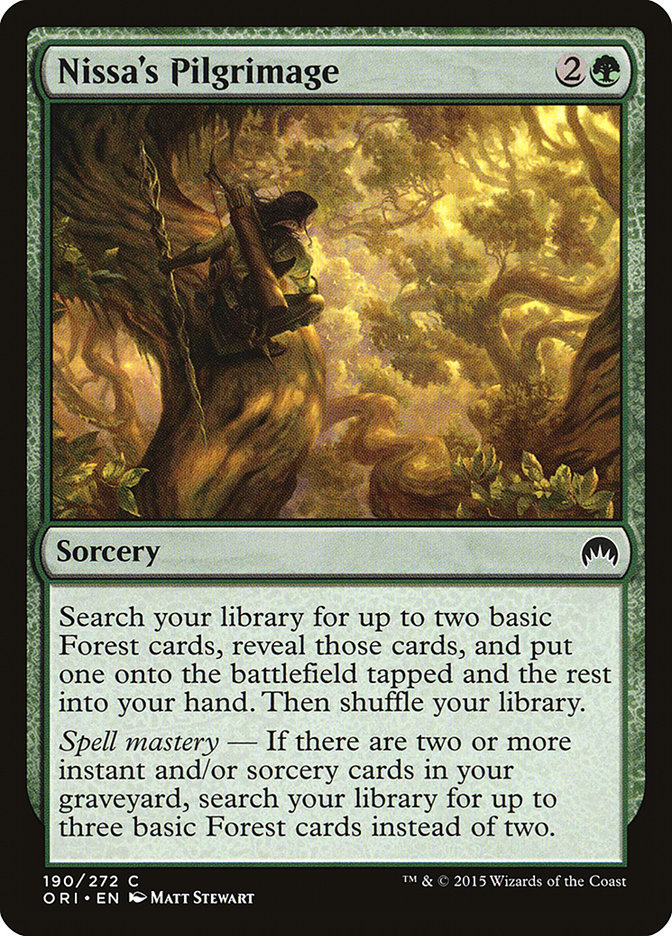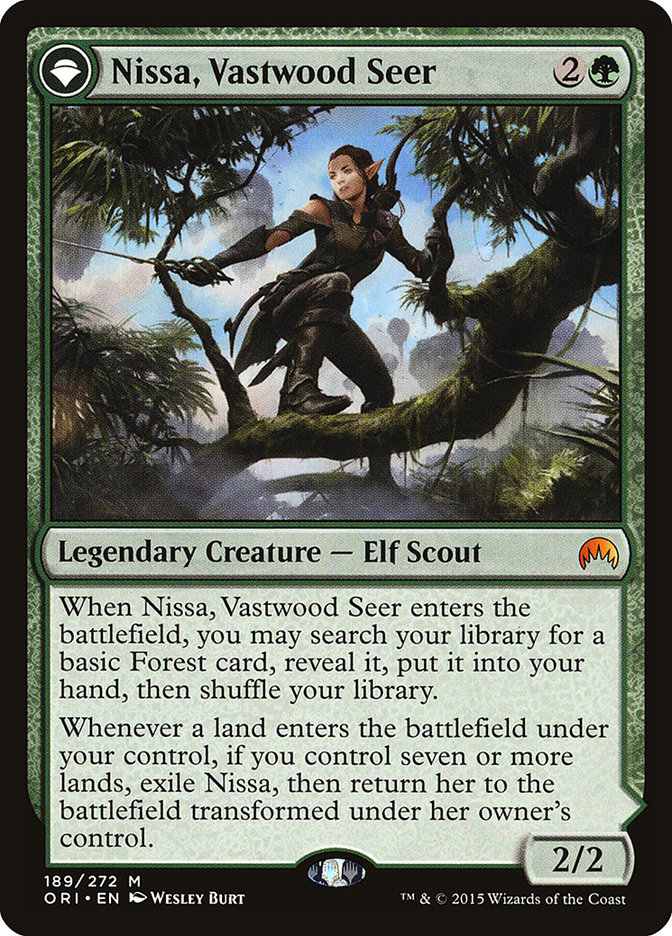The full spoiler is out for Magic Origins and the time has come, once again, for everyone to spew bad brews all over the Internet (present company included). Some of these decks might end up being good, but you never know until you try. Many new cards are hard to evaluate in a vacuum, and many others are overlooked at first. Most people tend to side on the safe side, playing known archetypes with minor “upgrades” even though the new additions might actually make the deck worse. Such is the way of things.
Newer doesn’t necessarily mean better. Some of the cards released with Magic Origins are much more complex than they seem, and complex cards often leave people with mixed feelings. The new planeswalkers from Magic Origins are exactly that: complex. Last week, I took some time to try and give you a baseline for evaluation. Most of us have moved past the point where we “put all of our green cards into our green deck,” so we must be more meticulous when it comes to something we haven’t seen before.
I honestly think that all of the new planeswalkers are good cards, but that doesn’t mean anything unless they have a proper home. Steamflogger Boss could be an insane card, but we just don’t know. Of course, this is an extreme case, but you get the idea. Many of these new tools are tough to decipher until we’ve physically had them in our hands and played them for ourselves. And the more complex a card is, the more games it will take to understand exactly how they work.
We’ve seen some of these cards before.
And this kind of reprint forces us to completely reevaluate how we look at it. Many of you reading this article have never played with Goblin Piledriver, let alone played it in a Standard format. Standard was a much different animal back then. Access to different colors of mana was scarce, leading us to play with such hits like this.
They sure don’t make ’em like they used to!
In all seriousness, Goblin Piledriver was alive and kicking alongside Goblin Warchief, and was even involved in some serious combo action with Patriarch’s Bidding. Now, instead of those crazy, hasted shenanigans, we’ll just have to settle for something a bit more… squishy.
Token generators have been used in Standard for months now, fueling Stoke the Flames and Foundry Street Denizen while also making the opponent’s spot removal spells pretty embarrassing. On the flip side, sideboard cards like Drown in Sorrow have become ridiculous. And unfortunately, Goblin Piledriver doesn’t solve the issue of Drown in Sorrow, but instead just further adds to its value. Piledriver also makes their spot removal more valuable where it wasn’t that relevant before.
Is Goblin Piledriver good enough that it warrants a spot in an aggressive red deck, even though it is more expensive than most of the deck’s threats, and adds a moderate amount of value to all of their removal spells? Personally, I think it will be decent, but there isn’t a great way to give Goblin Piledriver or the tokens Haste, which was a big draw for Goblins back in the day. Being able to cast Goblin Warchief and a Goblin Piledriver or two in the same turn made for some ridiculous damage output. Without an element of Haste, it is necessary to take a step back and figure out how to use Goblin Piledriver in a slightly different setting. It is this kind of objective reasoning that is necessary for constructing decks when a new set is released.
With that said, Goblin Piledriver could still be a reasonable threat, but it might end up being about on par with Borderland Marauder and worse in many situations. Some of the best one-drop creatures in Standard are not Goblins, so it feels like a huge sacrifice to play Goblin Piledriver and Frenzied Goblin instead of Zurgo Bellstriker and Monastery Swiftspear. In actuality, the two paths that red can take should end up being completely different, though I imagine many early decks will look like the current Atarka Red builds with Goblin Rabblemaster (and a few other Goblins) jammed into it.
And it will likely be worse for it.
Very few decks posted in articles upon the release of a new set are going to be good. Few are even playable. The cold truth is that many of these cards are impossible to figure out before actually playing with them. Sure, you can decipher which ones are good and you can speculate on which are the best, and you can even ponder on how to build a deck around some of the goodies from Magic Origins. But tried and true strategies are often going to be a better choice when the first big tournament comes around.
With that said, let’s take a look at some really bad brews!
The Merchant’s Last Sale
Who can forget Pack Rat and the annoying year that was the last Standard season? Blue Devotion. Black Devotion. Red Devotion. Green Devotion. White Dev…well, maybe not that one. And Sphinx’s Revelation to tie the entire crapshoot together. The reprints of Thoughtseize and Mutavault turned Pack Rat into a true monster, which pushed out many strategies while bottlenecking the rest. At many points, I don’t think there was a playable deck in the format besides Black/X, Blue/X, and Esper Control.
But since the rotation of Pack Rat, we’ve come a long way. The loss of Desecration Demon along with that little pest put black into an interesting position. And with Khans of Tarkir pushing us towards three colors, it seemed only natural to play Siege Rhino alongside our Thoughtseizes since we lost so much. But over time, old things can become new again and Black Devotion can make a comeback so long as we have the right tools at our disposal. Sure, it might not be as powerful as Mutavault and Pack Rat, but it might just be good enough.
Creatures (21)
- 3 Fleshbag Marauder
- 4 Gray Merchant of Asphodel
- 4 Rakshasa Deathdealer
- 3 Den Protector
- 3 Liliana, Heretical Healer
- 4 Erebos's Titan
Lands (26)
Spells (13)
Sideboard

Lets start with the obvious. Liliana, Heretical Healer is definitely not as powerful as Liliana of the Veil, but what is? On her planeswalker side, she doesn’t even fuel Devotion, making Gray Merchant of Asphodel look a bit awkward. But what about this big dumb idiot?
Three Devotion is a lot, and a 5/5 body for four mana is also gigantic for a black deck. On top of all that, Erebos’s Titan also has the ability to turn some of your more useless cards into more virtual Erebos’s Titans, assuming you or your opponent can somehow remove creatures from their graveyard. Deathmist Raptor, Den Protector, and Delve all come to mind immediately, but Haven of the Spirit Dragon can also trigger this Titan.
While maybe not as powerful as the old Core Set Titan cycle, costing two less mana is definitely a plus. And did I mention that it becomes immune to Hero’s Downfall, Crux of Fate, and End Hostilities if your opponent doesn’t have any creatures on the battlefield? If they don’t have a Dissolve or Silumgar’s Scorn at the ready, a fast Erebos’s Titan could be lights out for a control opponent. Thoughtseize helps to make sure the coast is clear, but it should be rather difficult for a control deck to get it off the table once it hits the battlefield.
We also have some built-in protection from Dragonlord Ojutai with Fleshbag Marauder and Merciless Executioner, which also happens to have a lot of synergy with the new posterchild for black decks.
While Liliana isn’t exactly at her peak in this shell, I think she helps give you a different angle of attack. If you’re able to successfully flip her into planeswalker form, it shouldn’t be all that difficult to protect her from opposing creatures. The zombie you get from the trigger coupled with the high density of removal spells in the deck should keep most attackers at bay. And once you get her going, she starts eating away at the opponent’s hand while threatening to reanimate Erebos’s Titan, Fleshbag Marauder, or even Gray Merchant of Asphodel.
Whip of Erebos is here to provide some significant life swings. With Erebos’s Titan’s gigantic body, lifelink is a big deal, but it also fuels Devotion and threatens to bring back lethal Gray Merchants. Whip is also pretty great for bringing back Fleshbag Marauder to keep your opponent low on creatures. And with every deck in the format playing creatures (especially Dragon-based Control), Fleshbag Marauder will almost always have something to eat.
Rakshasa Deathdealer and Den Protector might seem a bit out of place, and I suppose I have to agree. Rakshasa Deathdealer is no Pack Rat. It requires you to have a lot of mana to make it overly powerful, but it is a great threat against control at all stages in the game. For the cost, it is one of the most efficient creatures in Standard and it seemed to fit the shell nicely.
Den Protector is a bit more tricky, but I felt like it was good enough to include. After all, it is one of the defining creatures of Standard for a reason, and doesn’t always have to be coupled with Deathmist Raptor. Just look at Abzan Control lists recently. The raw power of Den Protector might overshadow the rest of the synergy in the deck, but it could also help win an attrition battle. The fact that it can bring back Gray Merchant is also pretty sweet even though it doesn’t add to our Devotion.
In retrospect, this deck will likely end up being another failed attempt to bring back Black Devotion, but you never know until you try.
Turn Four Ugin
And then look at this:
Creatures (19)
- 4 Elvish Mystic
- 4 Sylvan Caryatid
- 2 Genesis Hydra
- 3 Dragonlord Atarka
- 3 Dragonlord Dromoka
- 3 Nissa, Vastwood Seer
Planeswalkers (8)
Lands (25)
Spells (8)
Sideboard

I know what you’re probably thinking. And yeah, I am probably going to agree with you. This deck is terrible.
But what it represents could be phenomenal. Ramp strategies in Standard have often been associated with Green Devotion, since Nykthos, Shrine to Nyx and mana producing creatures are the most efficient ways of putting something gigantic into play. But I don’t think it was any coincidence that in the first game of the Versus Video linked above, I cast Ugin, the Spirit Dragon on turn four. And it was glorious! Holy hell was it glorious.
When I first saw this card, I really, really wished it was Kodama’s Reach or Cultivate. The extra text for Spell Mastery is pretty lackluster, and the card as a whole seems rather bland. But man does it feel good to hit your land drops without getting your Courser of Kruphix obliterated by Dromoka’s Command. While this card is a bit restrictive, forcing you to play with quite a few Forests, it does some really proactive, powerful stuff. But like most mana ramp strategies, you can stall out against control pretty easily. If you put all your eggs in one basket…
Ramping into one big spell can be magnificent against a midrange or aggro strategy. How does Jeskai Tokens beat an Ugin on turn four?!? Dragonlord Atarka and Dragonlord Dromoka have been doing some solid work in Standard lately. What if we consistently put them onto the battlefield on turn four and five? And how easy is it for us to actually flip Nissa, Vastwood Seer?
Really friggin’ easy.
This deck could be the start that takes us to a far better place. What about four- or five-color Dragons with a green base? Satyr Wayfinder could help find Haven of the Spirit Dragon, which could help us cast the Dragonlords or just rebuy them once they’ve been dealt with the first time. Explosive Vegetation felt phenomenal, and it really makes me wonder why it hasn’t seen more play already. When I built this deck for the Versus Series, I honestly thought that I was playing too many basic lands. But after playing just a few games with the deck, it might be worth it to play a lot more. It would likely require choosing between white or red, but that’s a topic for another day.
This version of Naya should probably be playing a lot more creatures instead of planeswalkers, if only to facilitate the use of Mastery of the Unseen in the maindeck. That isn’t anything new, but Mastery coupled with spells that put extra lands onto the battlefield could be much stronger than what we’re currently doing, which is flooding the board with mana aceelerants and making ourselves incredibly vulnerable to sweeper effects and spot removal. While Nissa’s Pilgrimage doesn’t allow you to get Plains to facilitate Mastery of the Unseen, it shouldn’t be too hard to build a manabase that can support both. Elvish Mystic and Sylvan Caryatid are likely too powerful to keep on the sidelines, but I wouldn’t be surprised if Nissa’s Pilgrimage led to another “Primeval Titan” era.
We Can Rebuild It
All of these new brews that you’ve been seeing over the past few weeks, and will likely see for the next few, are just stepping stones trying to help us find the right direction. Each time you see a new deck, it is likely the skeleton for an archetype that could (or eventually will) exist. Not everyone understands that aspect of building decks with new cards. If you want a really good example, check this out.
Creatures (2)
Planeswalkers (6)
Lands (26)
Spells (26)

This was the predecessor to U/W/R Flash. This deck. Terminus, Entreat the Angels, and guess what’s missing? Yeah, Sphinx’s Revelation. The card we all thought was too slow and too clunky. We saw the card. We knew what it did. But we didn’t understand it yet. And even though I won that Standard Open with such a clunky mess, it helped us all learn and begin to develop various builds of control over the next few months.
Magic Origins is full of wisdom, wonder, and new life. So many cards from the set could be beautiful, wonderful things. All they need is one, tiny spark.

